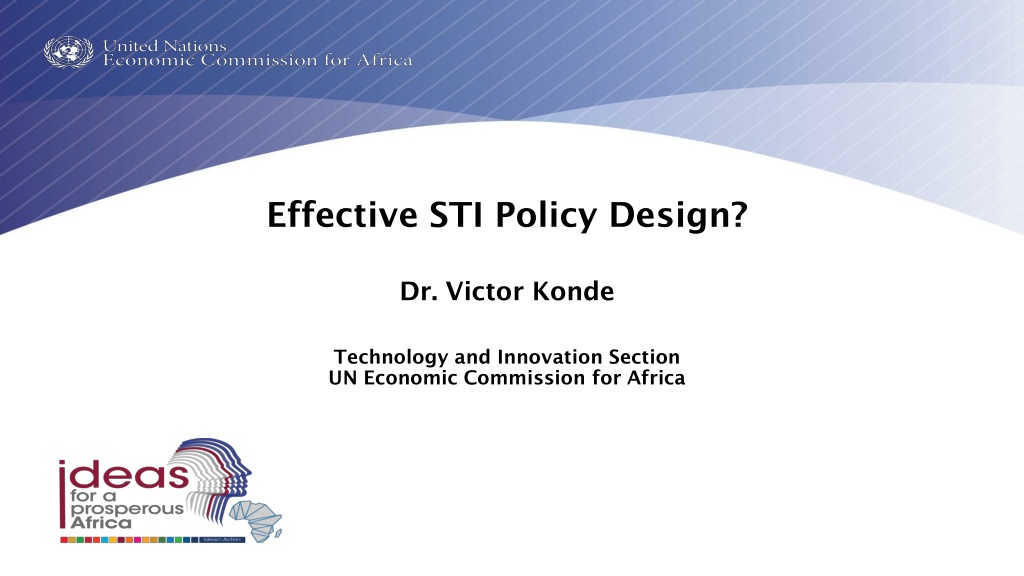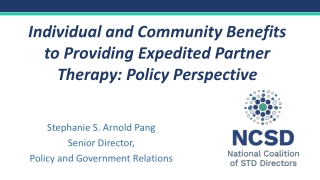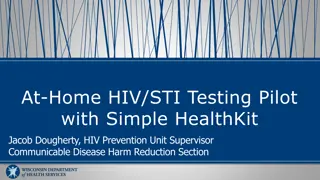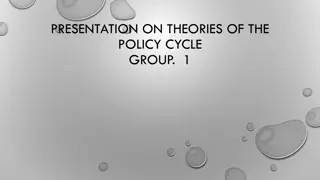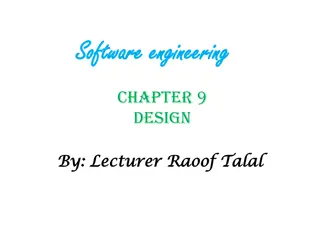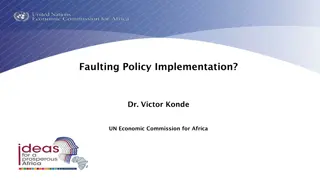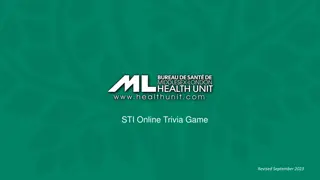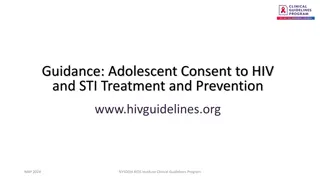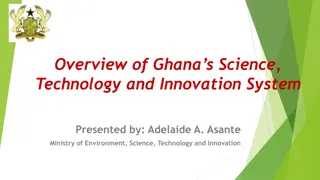Effective STI Policy Design by Dr. Victor Konde
Dr. Victor Konde from the UN Economic Commission for Africa discusses effective policy design in the intersecting domains of science, technology, and innovation. The case study highlights the vision and targets set by three countries to transform into knowledge-based economies with advanced ICT services and infrastructure.
Download Presentation

Please find below an Image/Link to download the presentation.
The content on the website is provided AS IS for your information and personal use only. It may not be sold, licensed, or shared on other websites without obtaining consent from the author.If you encounter any issues during the download, it is possible that the publisher has removed the file from their server.
You are allowed to download the files provided on this website for personal or commercial use, subject to the condition that they are used lawfully. All files are the property of their respective owners.
The content on the website is provided AS IS for your information and personal use only. It may not be sold, licensed, or shared on other websites without obtaining consent from the author.
E N D
Presentation Transcript
Effective STI Policy Design? Dr. Victor Konde Technology and Innovation Section UN Economic Commission for Africa
A reminder of what and never one view on STI policy set of actions that governments can take to deal with a range of problems in the intersecting and complementary domains of science, technology and innovation to achieve a clearly defined (national) objective when private incentives provided by free markets systematically perform poorly (Weimer and Vining, 1989)
The case of three countries: Clarity of the vision! Nation A (2004) B (2004) C (2004) Vision Provide every citizen and resident access to high quality and affordable ICT services to transform COUNTRY into a knowledge-based and technology driven economy Make ICT the fifth pillar of the economy Enhance the existing investments in information, communication and multimedia services (ICMS) infrastructure that will support future growth of ICMS services
The case of three countries: Clarity of targets Nation Targets A B C 1. Universal access for all communities to internet, telephone and multimedia by 2010 1. Increase fixed telephone density from 28% to 35% by 2005 By 2008: 1. High Speed Broadband : 2.8 million subscribers; 2. Telecom service penetration to reach 25% in urban and 10% in rural by 2010 2. Increase mobile cellular telephone density from 37% to 50% by 2005 2. 3G and Beyond: 1.5 million subscribers 3. Connect all schools, clinics and public offices to advanced telecom services 3. Mobile TV: 75% mobile TV adoption 4. Digital Multimedia Broadcasting: 60% household coverage for DTTB. 3. Extend broadband connectivity to all business hubs within the country by 2006 4. Fully open, private, competitive markets for all telecom services 5. Digital Home: 500,000 homes Interwork with external networks 5. Streamlined, efficient and effective regulations of the industry that are technology neutral, fully transparent and competitive 4. Provide at least 30% of household with broadband connectivity by 2008 6. Short Range Communications: Extensive usage in the supply chain management, Local manufacturing of RFID chipset 6. Affordable prices for telecom services, especially for the poor 5. Provide at least 50% of household with Internet connectivity by 2008. 7. VoIP/Internet Telephony: Residential & business service revenue constitute XX 1 billion 7. Profitable investment opportunities for business in all segment 8. Country as a first-class hub for investment, jobs and development, leader in transformation of Africa. 8. Universal Service Provision: Increased broadband Internet individual access
The case of three countries: Clarity of targets Nation A B C Technology neutral 1. Global mobile personal communications 1. High Speed Broadband 2. 3G & Beyond by satellite, 3. Mobile TV 2. Internet telephony, 4. Digital Multimedia Broadcasting Technology 3. Mobile cellular, 5. Digital Home 4. Fixed wireless, 6. Short Range Communications (e.g. RFID-based) 5. Mobile wireless 6. Multimedia 7. VoIP/Internet Telephony 7. Cable 8. Universal Service Provision
The lesson in policy design Is the policy vague on purpose or not informed? Which stakeholders were forgotten and why? Who or what was the driving policy design of each of the countries? Design effect: Creating awareness and promotion Creating markets Attracting investment and talent Building human capital Research and development Which country better represents your national STI Policy?
STI Policy are not better designed either Nation Vision A A Nation in which Science, Technology and Innovation are the driving force for competitiveness, wealth creation and sustainable national development by 2030. Targets 1. To strengthen the policy, legal, institutional and operational framework of the science, technology and innovation system 2. To improve investment and funding to STI 3. To strengthen the commercialisation, transfer and diffusion of technologies 4. Promotion and Popularisation of science, technology and innovation 5. To strengthen and build the human resource capacity in Science, Technology and Innovation 6. Ensure quality assurance in science, technology and innovation 7. To exploit Indigenous Knowledge System (IKS) for national development
Case of Thailands thrust 2 (has 5 thrusts) Strategic Thrust 2: Enhancing economic competitiveness and resilience Strategy 2.1: STI for increasing efficiency and productivity by sector Measure 2.1.1: Development of STI for agricultural and industrial cluster development and supply chain management Measure 2.1.2: Utilization of STI for increasing capacity, efficiency, and productivity of the agricultural and manufacturing sectors Strategy 2.2: STI for increasing value added, value creation, and innovation by sector Measure 2.2.1: Development of STI for increasing quality, standards, and safety of products and services Measure 2.2.2: Development of STI for green economy with an emphasis on market-driven product differentiation and innovation Strategy 2.3: Encouraging planning and adaptation to changes and trade barriers Measure 2.3.1: Promotion of STI for production planning and decision making with regard to climate change concerns Measure 2.3.2: Development of STI for proactive standardization to keep pace with changing requirements due to free trade agreements
Policy is not an exact science but helps to be less vague Other players may be as influential as policies! Mark Bernett: "By 1993, we had decided that we wanted the real thing .. full Internet access ... There were plenty of people who said that Africa had other priorities - after all, wasn t Fidonet (e-mail) working - or that Africa needed its own systems of communication...but with the relevant bits of string and sticky tape...[Africa] has gone from Zambia being one of the only countries with a connection to no country being without" [5]
